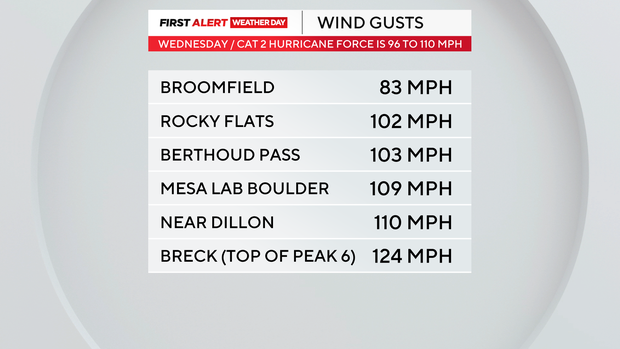Colorado
New Colorado tax credit could lift 50,000 children out of poverty, is latest to tap TABOR surplus

Boasting that child poverty in Colorado would soon be cut nearly in half, Gov. Jared Polis on Friday signed a large new tax credit for low-income families into law.
The ceremony put an underline on a legislative session that featured state policymakers looking again and again to the state surplus to flatten inequalities. Lawmakers passed dozens of new tax credits this year that tapped into massive revenues the state couldn’t keep and otherwise would have to return through refund checks.
The new family affordability tax credit that received Polis’ signature is by far the largest individual tax credit in terms of cost. It is also, advocates say, among the most impactful.
They expect it to lift more than 50,000 children out of poverty.
The new law, passed as House Bill 1311, will use roughly $700 million per year that comes in over the state revenue growth limit set by the Taxpayer’s Bill of Rights, or TABOR. It will send the poorest Colorado families $3,200 per child younger than 6. The amount of the credit will scale down as children grow older and family incomes increase, eventually zeroing out at $85,000 per year for joint filers and once children turn 17.
“Kids don’t choose who their parents are or what their income level is — or how they grow up,” Polis said during the bill signing ceremony at a Denver preschool. “Making sure kids everywhere have food on the table (and) have the support that they need to grow up is a big deal.”
The child tax credit stacks atop others passed or expanded by the legislature this year, including an increase to the state’s match of the Earned Income Tax Credit. In all, the new policies tap billions of dollars from projected TABOR surpluses in coming years that would have to be returned to taxpayers one way or another.
Democratic lawmakers, often over dissents from Republicans, opted mostly for directed credits rather than the general refunds that long have been typical in the state’s boom years.
How the new tax credits work
The Colorado Fiscal Institute, a progressive think tank involved in crafting the legislation, predicts families will receive as much as $4,400 a year per child 5 and younger through an expanded child care tax credit and the new family affordability tax credit.
Throw in the Earned Income Tax Credit increase, which matches up to 50% of the federal EITC that sends money to low-income households, and Colorado families could see significant financial help. The state EITC match doubled this year, amounting to nearly $1,900 extra for very-low-income working families with three or more children.
The credits depend on consistent TABOR surpluses and will be scaled down in less robust economic times. Caroline Nutter, the legislative coordinator for the think tank, estimates the credit changes will reduce the number of children in poverty — about 133,000 kids — by 40% in years when the credits are fully funded.
“What we’re really trying to do there is make sure families, even those making more than the median household income in Colorado, are receiving help,” Nutter said. “Raising kids in this state is not cheap. Even if you’re making $100,000 a year, it’s still a big cost to bear.”
The credits, while stacking together, work differently:
- The EITC expansion is based on a federal tax credit worth between $600 (for individuals without children) and $7,430 (for families with three or more children). Qualification limits range from $17,640 per year in adjusted gross income for a single person up to $63,398 for joint filers. Colorado will match up to 50% of the federal credit if state growth is on a solid footing.
- The child care tax credit covers a percentage of child care costs, depending on household income. At most, the federal credit covers about $1,050 for one dependent child and up to $2,100 for two or more. The Colorado credit matches up to 70% of that for households with incomes of $60,000 or less.
- The new family tax credit scales down based on family income as well as the ages and number of children. Single filers making $15,000 or less per year in adjusted gross income — and joint filers making $25,000 or less — will receive up to $3,200 for each child younger than 6 and, for children ages 6 to 16, up to $2,400. The credit amounts decrease as incomes rise, with a cap of $75,000 for individual filers and $85,000 for joint filers.
Coloradans may benefit from other credits, too — notably a $1,500 credit for child care workers, home health care workers, personal care aides and certified nursing assistants making less than $75,000 per year that Polis also signed into law Friday. Earlier this week, he signed off on a new tax credit that covers two years of in-state college tuition for students whose families make $90,000 a year or less.
On hand at Friday’s ceremony was U.S. Sen. Michael Bennet, who has championed a short-lived federal child tax credit that he’s hoping to revive in Congress next year by leveraging the looming expiration of tax cuts. He praised the state’s new credit.
“The family affordability tax credit testifies to the idea that we don’t have to accept those levels of childhood poverty as a permanent state of our economy, or our democracy, or our society,” he said. “I think the national leadership you’ve shown here is something that we will carry back to Washington, D.C. — to be able to say that because of your leadership, governor, Colorado now has the best anti-poverty legislation of any state in America.”
Do new credits undermine TABOR?
Together, Colorado’s new tax credits represent a reimagining of how state officials handle TABOR surpluses — while trying to stay within the constraints of the constitutional amendment passed by voters more than 30 years ago.
Traditionally, state revenue that’s over the cap would be returned to Coloradans largely through a six-tier system that gave higher-income households a bigger share under the idea they paid more in taxes. Nutter called that approach “wasteful” because it directs money to people who already have the most resources.
The Common Sense Institute, a nonpartisan, free enterprise-oriented think tank, noted that the money returned through tax credits still stays with Colorado taxpayers, versus going into government programs. But a CSI report on tax credits argues that the new approach “broadly undermines TABOR’s intent” by divorcing refunds from taxes paid.
In coming years, upwards of $1 billion per year that would typically be refunded through the six-tier system will instead go to targeted tax credits, according to its report.
Lang Sias, a former state representative and now a research fellow at the think tank, said the legislature “has effectively substituted its judgment on how those tax dollars should be spent over that of taxpayers who would otherwise see the refunds.”
“We’re moving away from a TABOR refund and toward a TABOR redistribution,” he said in an interview.
He didn’t weigh in on the merits of the new policies but questioned lawmakers’ decision to tie the new tax credits to the state’s surplus and, in some cases, to give them sunsets. Assuming they’re as beneficial as proponents say, both cases mean they may not be permanent policies.
The new tax credits also aren’t the only way state officials responded to a foreseeable future of $1 billion-plus surpluses. Polis fought for a $450 million income tax cut, which predominantly will benefit wealthier Coloradans, and a decrease in the state sales tax rate during economic booms.
Taxpayers can also continue to expect flat TABOR refunds when they file their taxes — albeit closer to the $115 range than the $700-plus amounts of recent years.
Nutter argued that while the shift will affect income brackets differently compared to the prior system, people across the spectrum still will see more money in their pockets — from the credits or, for wealthier people, through the tax cuts.
Stay up-to-date with Colorado Politics by signing up for our weekly newsletter, The Spot.

Colorado
Several Colorado highways temporarily closed due to high winds

BOULDER, Colo. (KKTV) – Several Colorado highways are closed due to high winds reaching up to 80 MPH in some locations.
According to the Colorado Department of Transportation (CDOT), the closures currently in place include:
- CO 93 both directions from 64th Ave (Arvada) to CO 170.
- CO 72, both directions from CO 7 to Ward Road.
- US 36, both directions from Boulder to Lyons.
- CO 128, both directions from CO 93 to McCaslin Boulevard.
Transportation officials said the winds may also cause traffic signal outages.
If traffic lights are experiencing a power outage, CDOT said drivers must treat it as a four-way stop:
- Come to a complete stop at the stop line or before entering the intersection.
- Vehicles proceed one at a time, in the order they arrived.
- If two vehicles arrive at the same time, the driver on the right goes first.
- Always yield to pedestrians and cyclists already in the crosswalk.
- Make eye contact when possible and proceed cautiously – do not assume others will stop.
Drivers are also encouraged to reduce speeds, keep both hands firmly on the steering wheel, and be alert for debris, downed signs and sudden gusts. High-profile vehicles, such as trucks, vans and vehicles towing trailers, are encouraged to avoid travel when closures or restrictions are in place.
CDOT also reminds commercial drivers to ensure tire chains are properly secured and not dragging, which can create sparks and increase wildfire risk during dry, windy conditions.
Copyright 2025 KKTV. All rights reserved.
Colorado
Dangerous fire situation looming for parts of Colorado’s Front Range, as another day of strong winds lies ahead

Dangerous weather conditions in Colorado are expected to team up for a surge in the Front Range fire danger. For most of the day Friday conditions will be favorable for rapid fire spread. Avoid outdoor burning and any activity that may produce a spark. Friday will be a First Alert Weather Day.
The triple threat of hurricane force winds, record heat and single digit relative humidity will all be in force from 10 a.m. to midnight on Friday. That is when a red flag warning for high fire danger is issued.
For the first time in Colorado, the National Weather Service office in Boulder has issued an extra warning know as “A Particularly Dangerous Situation” for northwest Jefferson and western Boulder counties for possible wind gusts of 85 to 105 mph.
The worst areas will be from Highway 93 up into the higher foothills. That, combined with single digit relative humidity, will make conditions worse that what the state experienced on Wednesday.
For the northern Front Range, the strongest winds will be west of I-25 into the foothills. Along and east of the I-25 corridor including the Denver metro area, winds may gust up to 40 mph with humidity levels as low as 8%. For that reason, the entire Denver metro area is in the warning area.
The strong winds will be warming downslope winds for eastern Colorado with highs on Friday shooting up into the 60s and 70s. Denver may have a new record high of 70 degrees. The old record is 67 degrees last set in 2023.
Top wind gusts may likely be stronger than Wednesday. Those gusts were hurricane force in some areas of the foothills and mountains with gusty winds comparable to those of a category 2 or 3 hurricane.
Colorado
These wind gusts in Colorado reached the strength of a Category 3 hurricane

DENVER (KDVR) — Strong wind gusts at the speed of a Category 3 hurricane swept through two Colorado counties on Wednesday.
Strong winds blew through the state on Wednesday, leaving tens of thousands without power, causing safety road closures and recording wind gusts reaching over 100 mph. In some areas, winds were even higher, with Summit and Grand counties seeing 124 mph wind gusts.
At 9 p.m. on Wednesday, one weather station on top of Breckenridge Peak 6 picked up a wind gust of 124 mph in Summit County. Then, at 9:52 p.m., another weather station at Parsenn Bowl Summit in Grand County picked up a wind gust of 124 mph, according to National Weather Service records.
These two wind gusts weren’t only the strongest gusts on Wednesday, they were so strong that they were comparable to the strength of a devastating hurricane.
The Pinpoint Weather team said it was the strength of a high-end Category 3 hurricane. These winds also compare to a high-end EF2 tornado, which could damage one or two family residences, according to NWS.
These weren’t the only areas that saw high winds. Several counties across Colorado saw winds higher than 100 mph throughout Wednesday.
The Pinpoint Weather team expects the wind to continue into Friday with continued fire danger. The winds are expected to slow down throughout the weekend.
-

 Iowa5 days ago
Iowa5 days agoAddy Brown motivated to step up in Audi Crooks’ absence vs. UNI
-

 Iowa6 days ago
Iowa6 days agoHow much snow did Iowa get? See Iowa’s latest snowfall totals
-

 Maine3 days ago
Maine3 days agoElementary-aged student killed in school bus crash in southern Maine
-

 Maryland5 days ago
Maryland5 days agoFrigid temperatures to start the week in Maryland
-

 Technology1 week ago
Technology1 week agoThe Game Awards are losing their luster
-

 South Dakota5 days ago
South Dakota5 days agoNature: Snow in South Dakota
-

 Nebraska1 week ago
Nebraska1 week agoNebraska lands commitment from DL Jayden Travers adding to early Top 5 recruiting class
-

 Sports1 week ago
Sports1 week agoPro Football Hall of Famer Troy Aikman critiques NIL landscape, transfer rules and Lane Kiffin’s LSU move

























